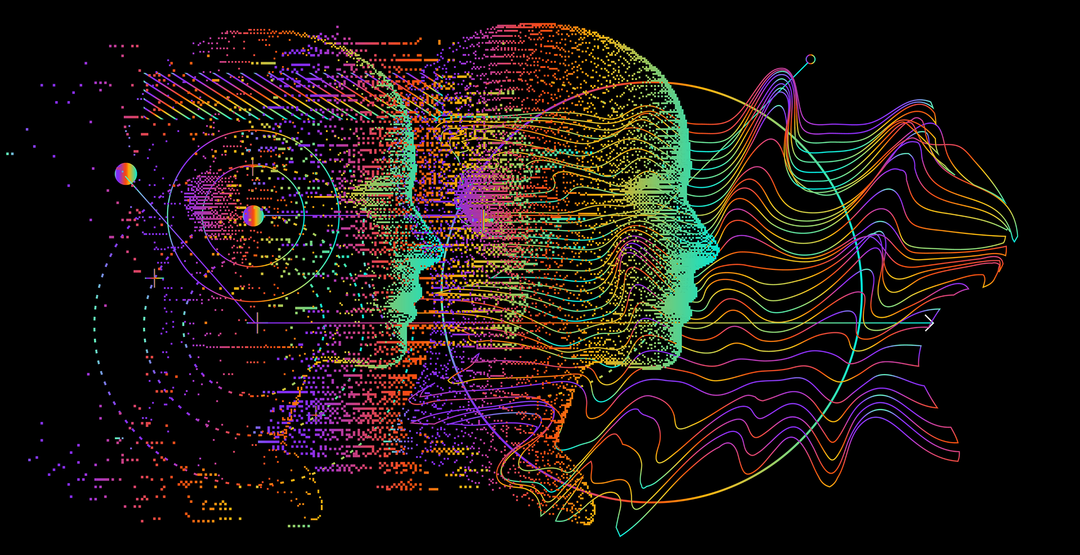In search of actual intelligence: the real key to digital product development


Share article
Like it or not, human beings are naturally social creatures. Whether you’re an introvert or an extrovert, our brains are wired for connection – and our wellbeing hinges on meaningful ties and relationships.
In fact, a 2010 meta-analytic review, which combined results from 308,849 participants across 148 different studies, found that people with strong social relationships had a 50% greater chance of survival – even in today’s modern, tech-powered life.
It makes little sense, then, that, despite living in an age of unprecedented digital connectivity, we’re still experiencing profound disconnection. In the UK, one in four adults suffer from poor mental health yearly, with 7.8% of us reporting feeling lonely ‘always or often’ according to mental health charity, Mind. Indeed, isolation-driven depression affects approximately 280 million people globally, according to 2023 WHO statistics, making it the leading cause of disability worldwide.
Tech has unequivocally brought immense benefits to society, with AI-powered tools like Woebot and Wysa even driving improved mental health, by teaching valuable cognitive behavioural therapy techniques to users. AI has brought about unprecedented access to all kinds of invaluable tools, circumnavigating never-ending waiting lists and ensuring people have more autonomy over their personal recoveries than ever before. Innovations like Earkick even use real-time biomarker analysis to monitor and personalise mental wellbeing – bringing about advancements in treatments and understanding never seen before.
Yet, reliance on AI for emotional support raises concerns. Whilst AI companions – including ChatGPT, which has fast gained traction as the therapist of choice for Gen Z – can offer immediate, generalised assistance, they often lack the depth of real, human empathy – even when they say all the right words. A recent WHO study highlighted this, discussing the methodological flaws and lack of transparency that can hinder both the efficacy and safety of these solutions, particularly when used alone.

The most worrying thing about all of this is that over-reliance on digital platforms of any kind – without adequate, real-world, human support to accompany it – can actually exacerbate feelings of isolation, leading to a very negative cycle. In 2024, the Pew Research Center found that 48% of US teens feel social media has had a mostly negative effect on their mental health, for example, with excessive screen time also being linked to increased rates of anxiety, depression and loneliness among adolescents.
This is not what the power of technology should be used for. Yes, AI can effectively mimic human interaction, bridging a very real gap when it comes to connection and support. But it cannot and must not fully replace the depth and authenticity of genuine human relationships, support, and interaction. If the proliferation of AI companions, such as those designed to engage the elderly in daily conversations, tells us anything – it’s that there’s still unprecedented yearning for connection in this increasingly digital world.
So, what can developers – and the companies working with them to create new apps and platforms – actually do about this?
It all begins by bringing more of their own humanity to the table. Creating impactful digital products isn’t just about lines of cutting-edge code. It’s about asking the right questions at the start of every project, concept and brief. What do people really, honestly need right now? How will this product help them feel more connected, understood or empowered? How can this tool amplify – not replace – what makes us human?
It's time to stop viewing AI as a solution to all, instead, treating it as a means to build more meaningful, individualised, hybrid experiences. This doesn’t mean discarding AI completely. On the contrary, it’s a case of recognising its unprecedented efficiency, speed and value, then pairing this with design principles rooted in emotional intelligence, empathy and community. It’s about ensuring that products don’t just work well, but that, vitally, they actually work – and add real value – for people.
This is particularly relevant for a generation whose values are reshaping the market. Gen-Z is steering a paradigm shift – a return to what is needed and natural. With 73% willing to pay more for sustainable, ethical goods, according to 2023 First Insight research corroborated by many, there’s never been more clear demand for solutions that align with nature and human values. In other words, the new demographic, about to become the consumer majority, isn’t just seeking products but purpose. And it’s our duty, as developers and as brands, to give that to them, as they continue paying close attention to how companies show up in the world – digitally and otherwise.
We can no longer afford to focus purely on speed or scale, then. Yes, AI can accelerate prototyping. Yes, it can personalise user experiences to an extent. But, to truly resonate, our digital products must be designed with the intention to reconnect – either through the solution offered to the end user or through the inherent design – rather than isolate.
This could mean incorporating community-led features into fitness or mental health apps, for instance, perhaps prioritising offline experiences led by AI-generated prompts that encourage healthy, outdoor walks or meet-ups with friends, as well. Or it could mean co-designing platforms alongside the very people they are designed to serve, be it young carers, isolated elders or underserved communities, to allow humanity to shine through there, as well. Solutions must feel genuinely lived in, not lab generated.
Ultimately, there is a place for AI in all of this. But the best digital experiences will restore human interaction, rather than replace it. Products that reflect and respond to the real, lived needs of society – particularly those created during a time of widespread digital burnout, mental stress and global uncertainty – will be the ones that add real value and endure. They will earn trust, loyalty and advocacy, giving weight and respect to your brand. And more importantly, they will feel right.

If we want to build AI tools that serve humanity, we must first bring more humanity into how we design and build them.
Actual intelligence – deep, empathetic and value led – may well be the most important application we need to recover.

More thoughts
Thought leadership creates value, builds knowledge and takes a stand, bridging the gap between traditional and digital platforms
SayHello!
- 22:07:32NashvilleUSA
- 23:07:32New YorkUSA
- 04:07:32LondonUK
- 05:07:32KatowicePoland
- 05:07:32BratislavaSlovakia
- 06:07:32PlovdivBulgaria
- 08:07:32DubaiUAE

